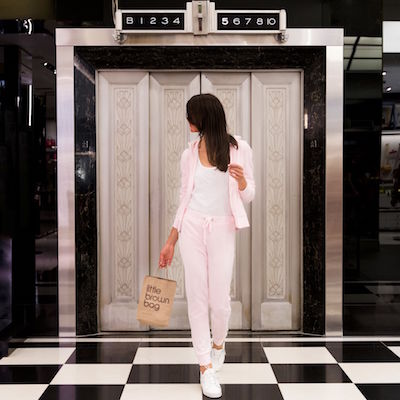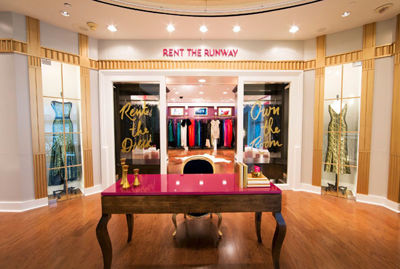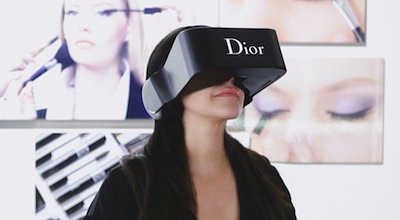NEW YORK — According to Boston Consulting Group, six out of 10 luxury goods sales are influenced by digital marketing, meaning that brands must now act urgently to embrace the digital revolution or fear being left behind.
On Oct. 6, the French American Chamber of Commerce hosted a panel discussion, “The Seamless Luxury Experience: Harmonizing Events, Retail and Digital Strategies,” to measure the digital strategies implemented by brands in the luxury sector. At the forefront of the discussion was the importance of a seamless, omnichannel approach that embraces all interactions and touchpoints found along the purchase journey.
“Within the United States alone, we found that consumers are predicted to spend 20 to 35 percent of their total purchasing online over the next few years,” said Robbin Mitchell, partner and managing director of Boston Consulting Group.
“This says that digital is not a fleeting trend, but in fact it is a paradigm shift between the ways brands and consumers are interacting with one another,” she said. “What we find is that consumer luxury shoppers, that in fact, six out of 10 luxury sales transactions are influenced by digital.
“The luxury consumer is telling us they want to redefine the relationship.”
Rest easy retail
Digital has become an unavoidable part of consumers’ daily lives. With its advances, the future of bricks-and-mortar retail has been called into question. Ms. Mitchell, who acted as the FACC panel moderator, kicked off the discussion by asking if, fact or fiction, the retail store is dead.
Responses from the panelists varied, but all agreed that the traditional retail model is evolving. Also, it is now nearly impossible to keep digital out of physical stores because doing so would deem a brand irrelevant and unable to keep with the times.
Marie Audier D’Alessandris, chief of global and North American marketing at Coach, explained that for the U.S. leather goods maker, 50 percent of sales still happen at its physical storefronts.
But, consumer behavior online has helped Coach to develop its in-store strategies and omnichannel programs.
With ecommerce expected to continue to grow 12 to 15 percent yearly, and digital and social campaigns taking up space in consumers’ minds, the role of the store has advanced. Ms. Audier D’Alessandris stressed that experiences occurring online are at the epicenter of omnichannel retail.
As a result, it is single channel retail that has gone by the wayside. Djamel Tourbrinet, marketing director of Cegid North America, highlighted this point by mentioning pure player ecommerce brands that have gone from digital to physical points-of-sales.
Back in 2013, online retail site Rent the Runway jumped from its online-only foundation with a showroom in Henri Bendel’s New York flagship store that provides consumers with a guided and efficient way to find the right outfit.
The 1,400-square foot, second-floor showroom features a rotating collection of the retailer’s designer brands and lets consumers work directly with Rent the Runway Go-To Girl personal stylists. Beyond enhancing efficiency, the showroom gives the brand greater control over its image since in-store experiences are generally more encapsulating than digital (see story).
Additional brands to realize that single channel is not an optimal strategy include Amazon, Warby Parker and Bonobos, among others.
“We know for a fact that shoppers that buy both online and offline tend to spend 15 percent more than a single channel shopper,” Cedig’s Mr. Tourbinet said. “That’s a stat that is a wake up call for brands that are trying to figure out whether they should do omnichannel or digital.
“It is not a questions of whether you should do it or not,” he said. “It is when and how you should do it.”
In-store technologies are also being applied to the in-store setting to enhance the omnichannel experience while mimicking activities once had only online.
With nearly all consumers connected, in-store engagement tactics are bound to continuously accelerate.
Tom Serrano, president of Havas Luxe, emphasized that retail will not die off, but narrative storytelling via brand engagement in-store will be heightened through the use of technologies such as virtual and augmented reality.
These tools will be implemented as a means to forge a connection between brand and consumer, as it is human nature to yearn for a “real” interaction or touchpoint.
With major brands including Coca-Cola and McDonald’s trying their hand at virtual reality in a bid to connect with younger consumers and leverage mobile in innovative ways, companies are sitting up and taking notice.
Although the technology may not be well-suited to every brand, executives in the food, retail, automotive and hospitality industries could hit a marketing home run by taking advantage of inexpensive cardboard packaging and mobile apps to create a memorable augmented viewing experience (see story).
Speaking on behalf of U.S. automaker Cadillac, Amanda Knauer, senior manager, brand strategy and implementation, stressed that these changes are happening very quickly in the automotive industry.
Consumers in the market for a new vehicle spend a large amount of time conducting online research prior to visiting a dealership. This has created an inverse relationship between digital trends and automakers.
In the online space, the experience is not linear with the consumer often navigating away from a brand’s platform, even if the move is unintentional, due to the nature of the Internet.
The lack of control from a brand perspective, a primary concern for luxury brands, underscores the importance of omnichannel retail and the placement of technology and tools in an in-store setting.
While Ms. Knauer and her fellow panelists agree, there is no substitution for in-store experiences, emerging tools such as virtual and augmented reality can assist in maintaining foot traffic to physical stores.
For example, in 2014, German automaker Porsche began equipping dealers with an augmented reality iPad application for the Porsche Panamera that immerses interested consumers in the vehicle’s capabilities.
When hovering the iPad over a vehicle, the app synchronizes with markers that lead to stills, text, video and animation to give consumers a full sense of what the vehicle offers. The app coincided with the release of the Panamera in the Middle East, aiming to increase exposure in eight countries (see story).
Determining digital
Rather than looking at digital as a threat, BCG points out in its 2016 projections that it can be a boon to the luxury industry. Digital holds with it opportunities for personalization and reaching a wider geographic clientele.
Whereas luxury brands drove growth previously by expanding their physical footprint into emerging markets, these hot markets have cooled their spending, requiring brands to look elsewhere. Digital channels enable brands to acquire and retain new clientele (see story).
Luxury brands have long been categorized as laggards when it comes to embracing digital technologies.
But, for a detailed oriented industry rooted in longevity, quality and craftsmanship, its pace should be expected, not dismissed as an unwillingness to be viewed as modern, due to fears of not upholding luxury’s allure and expertise as digital marketing progressed.
“What we are seeing is its really a process that brands are going through,” Cedig’s Mr. Toubrinet said. “What I understand, is that luxury is all about the long-term, and when you think about a project it’s long-term, it’s detail-oriented, you want to do it well.
“In that perspective, when [luxury brands] go to a digital project, it seems that they take the same mindset,” he said. “Digital is all about the short term, there’s a lot of technologies and styles that exist out there – virtual and augment reality – there’s a bunch of others that can be used.
“It is hard for luxury brands to get that agility [with new technologies quickly]. I think that’s the fear, of not getting it right the first time, because it goes against the DNA of a luxury brand.”
This article first appeared in www.luxurydaily.com





